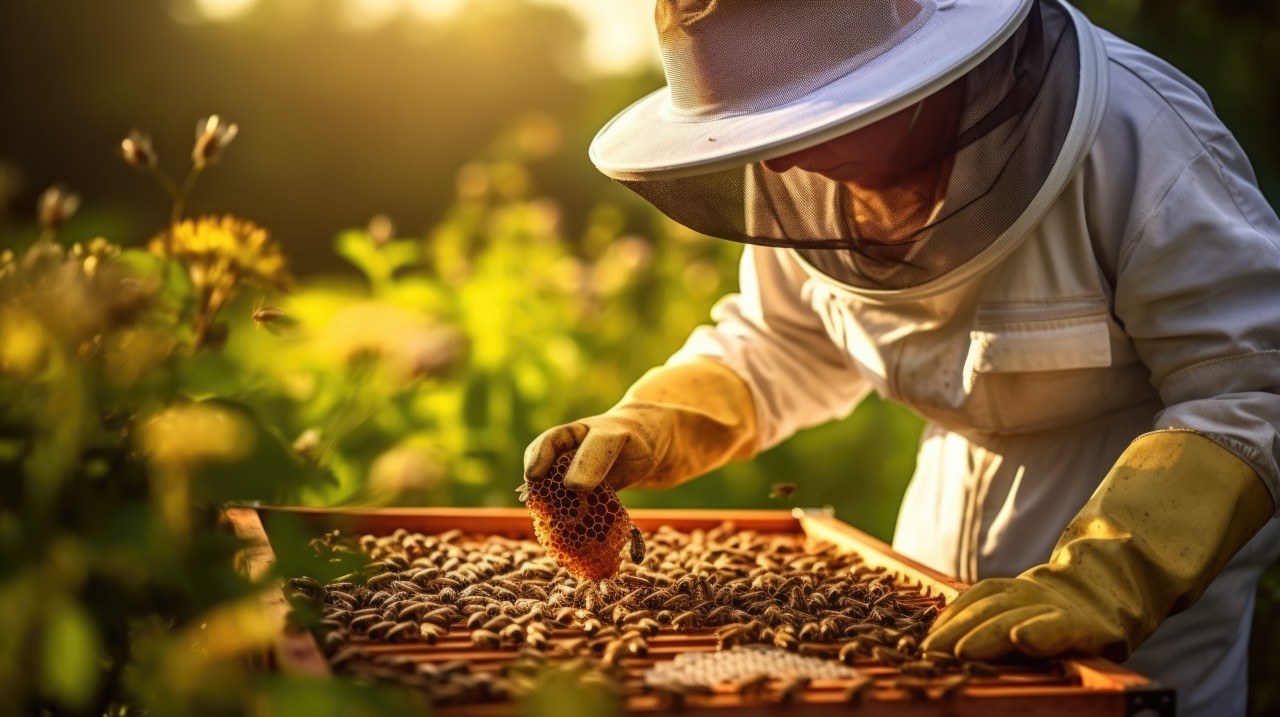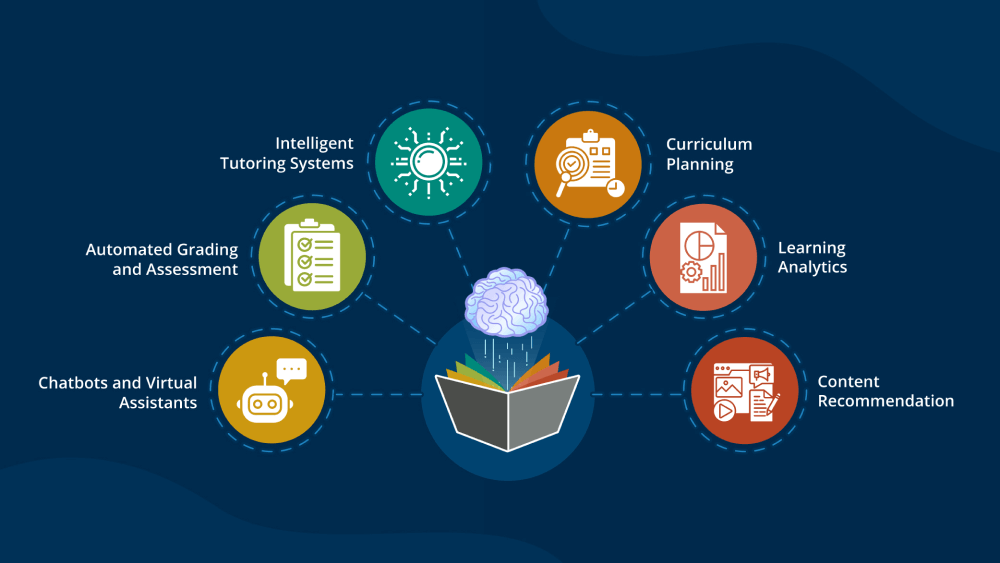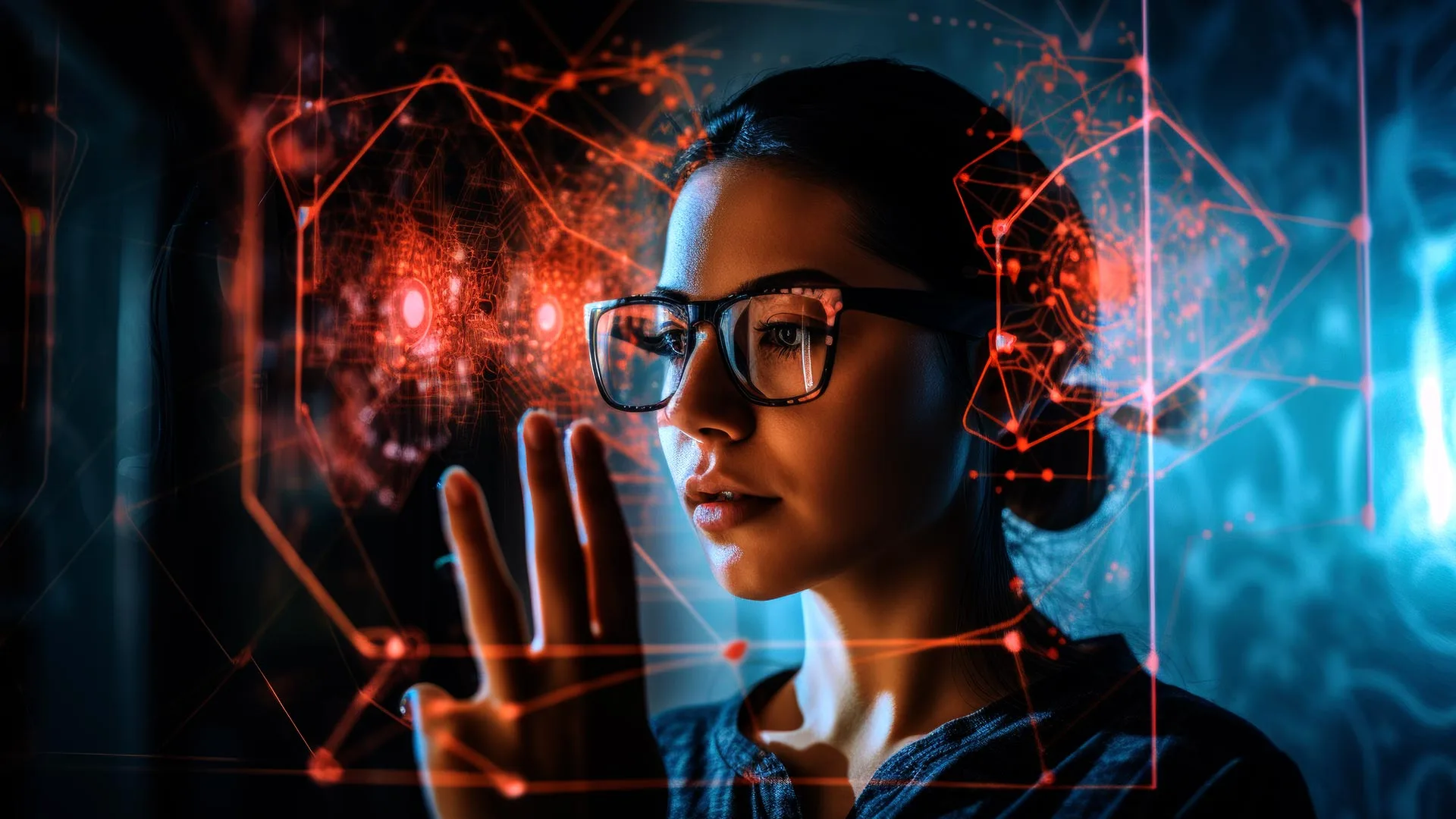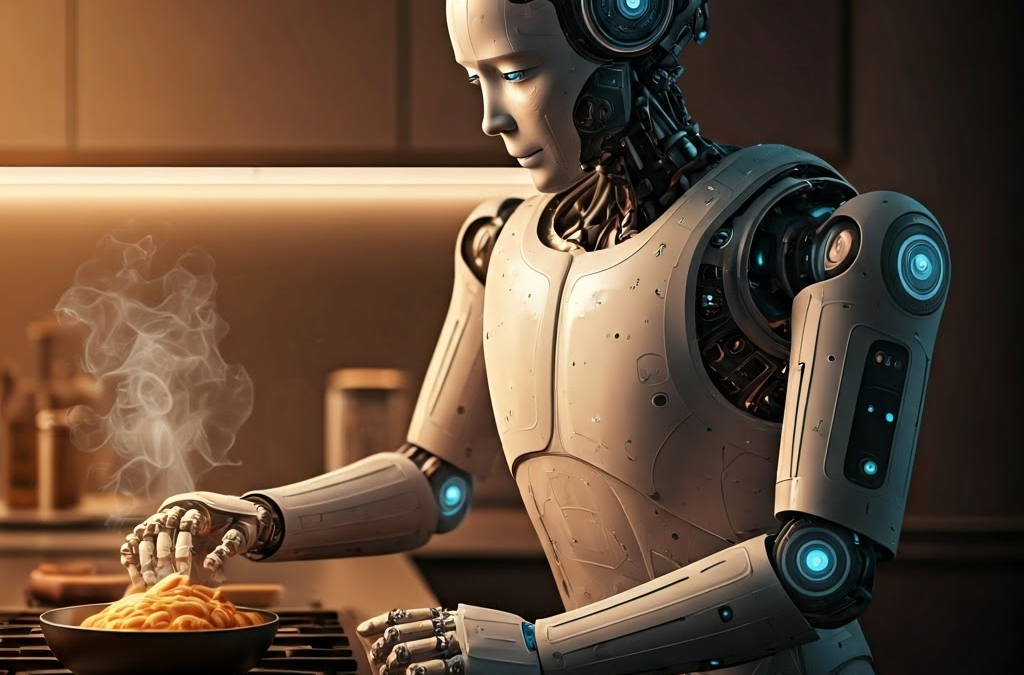Key Highlights
- Artificial intelligence (AI) is revolutionizing various industries, including some you might not expect.
- From beekeeping to culinary arts, AI is being utilized in innovative ways to improve efficiency and solve complex problems.
- This blog post highlights 10 surprising applications of AI that demonstrate its vast potential.
- We’ll explore how AI is enhancing traditional practices and shaping the future of unconventional fields.
- Discover the intersection of AI technology and human creativity, and glimpse into the exciting possibilities that lie ahead.
Introduction
Artificial intelligence, or AI, is often seen as something from the future. But it has already become a part of our everyday life, including platforms like Twitter that streamline our daily tasks. We use voice assistants powered by natural language processing (NLP) to help us with tasks and get personalized recommendations for things we might like. AI technology is changing many areas in our daily lives in ways we didn’t expect. This article will look at some surprising uses of AI. It will show how this changing technology is making an impact on different industries.
10 Surprising AI Applications Unveiled
Get ready to be amazed. We will look at how AI is used in surprising ways. These examples show the smart ideas behind AI apps. They are changing what we thought was possible. Let’s explore this interesting world of unexpected AI uses.

1. AI in Beekeeping: Enhancing Pollination and Hive Health
Beekeeping is very old, like agriculture. Now, it is getting help from AI technology. AI uses sensors and machine learning to check the health of hives. It can see how bees are doing and guess dangers like diseases or chemicals.
AI uses pattern recognition to look at data from the hive. This lets beekeepers know if there are changes in temperature, humidity, or how bees are moving. With this real-time information, beekeepers can solve problems quickly. This helps bees pollinate better and keeps our ecosystem strong. AI-powered sensors can reduce energy consumption in beekeeping by up to 53% compared to traditional methods.
2. AI-Driven Content Creation for Historical Fiction
Who could have imagined that AI could help tell history in a new way? AI tools are now being used to create realistic historical fiction. They look at a lot of historical data like texts, maps, and even genetic information. Natural language processing algorithms can make real dialogue, storylines, and character details. News organizations like the Washington Post are also exploring how AI can enhance storytelling. Deep learning models can bring back past events and social setups. This gives writers a great and correct background for their stories. This blend of technology and creativity offers exciting chances for both writers and readers of historical fiction. AI-powered recipe creation can analyze over 50,000 flavor combinations in seconds, which can be applied to creating historically accurate culinary descriptions in historical fiction.
3. Artificial Intelligence in Wine Making: Predicting the Perfect Harvest
Using artificial intelligence and ml algorithms in winemaking helps wineries predict the best harvests accurately. AI technology uses machine learning to look at historical data. This helps improve how grapes are grown, leading to better wine quality. With AI in the process, winemakers can reduce human error and enhance how they manage vineyards. This use of AI shows how new technology is changing traditional fields like winemaking. AI-driven predictive analytics in winemaking can forecast future yields with up to 70% accuracy based on historical data and weather patterns.
4. AI Solutions in Traditional Crafts: Preserving Artisan Skills
AI is helping keep traditional crafts and skills alive. These crafts are at risk of disappearing. AI technology, especially pattern recognition, can make digital records of old designs and techniques. This information can then train robots and machines to repeat these detailed processes. By mixing the exactness of AI with the skill of human artists, we can make sure that these valuable traditions don’t get lost. They can be shared with the future. AI-powered image recognition technology can document and preserve ephemeral street art with up to 90% accuracy.

5. The Role of AI in Spiritual and Religious Studies
AI is surprisingly becoming important in spiritual and religious studies. Researchers are looking at how AI technology can help analyze religious texts. It can find patterns, themes, and even create new interpretations. While AI cannot match human intelligence or faith, it can give insights into complex religious ideas. It might also help start conversations between different faiths. This brings up interesting questions about consciousness and how technology and spirituality connect. AI algorithms can analyze customer reviews to suggest improvements in spiritual content, leading to a 15% increase in engagement.
6. AI Integration in Public Libraries: Personalized Learning Experiences
Public libraries are changing. They used to just hold books, but now they are becoming active places for learning thanks to AI. Machine learning can look at how each person reads, what they like, and what they want to learn. This helps give them book choices that fit them best. Many libraries are also adding chatbots to their websites and apps to enhance customer service. These chatbots work all day, every day to help with research, suggest books, and offer homework help. This kind of personal touch helps people love to learn and keeps libraries important and easy to reach in today’s digital world. The use of AI-enabled chatbots in libraries has increased customer engagement by 40%.
7. Artificial Intelligence in Street Art: Mapping and Preservation
Street art is often temporary, but now it is being documented and saved using AI. Image recognition technology can spot and store pictures of street art, creating digital records of these short-lived works. AI can also look at social media posts and location data to find where street art is placed. This helps people find and enjoy these creative public expressions. By documenting street art, AI is making sure that these important art forms will not disappear with time. AI-powered image recognition can identify and catalog street art with up to 85% accuracy.
8. AI in Culinary Arts: Crafting Unique Flavors and Textures
AI is bringing new ideas to the cooking world. Chefs and food scientists are using AI tools to try out new flavor mixes. They can check the chemical makeup of ingredients and see how different cooking methods will change the final dish. Machine learning and pattern recognition can help chefs learn about taste and texture. This leads to new cooking ideas and special dishes. AI-driven flavor analysis tools can predict flavor trends with 80% accuracy in the food industry.
9. Using AI to Enhance Wildlife Conservation Strategies
Preserving endangered species and protecting our planet’s biodiversity is an important job that AI helps with. AI can analyze data from camera traps, satellite images, and sensors. This helps track animal movements, find places where poaching happens, and foresee changes that affect wildlife populations. Autonomous vehicles are used to check large conservation areas. They collect data and stop illegal activities. This makes wildlife protection more efficient and effective. AI-powered systems can detect unusual activities like illegal hunting with up to 90% accuracy, enabling rapid response to protect wildlife.
10. AI’s Impact on Traditional Farming Techniques
AI is changing how traditional farms work by bringing in precision agriculture alongside drones and robotics. With sensors, autonomous vehicles, and machine learning, farms can improve irrigation, fertilization, and pest control. This helps reduce harm to the environment while increasing crop yields. Pattern recognition technology can spot early signs of crop disease or stress. This allows farmers to act quickly, helping to lessen crop losses. These new tools are making farming more efficient, sustainable, and profitable. AI-powered inventory management in agriculture can reduce food waste by up to 20% in farms and production facilities.
The Intersection of AI and Unexpected Industries
The examples we have seen show that AI is now not just a part of science fiction or high-tech areas, especially in gaming and solving problems in real-time. Instead, it is a strong tool for generating new ideas and solving problems in many different areas, including some unexpected use cases in traditional fields, such as those related to composers and even chess. This use of AI in unexpected fields is mixing technology with human creativity. Studies show that AI integration in traditional industries can increase productivity by up to 40% and reduce operational costs by 20-30%.

AI’s Expanding Role in Non-Traditional Sectors
As AI technology is getting cheaper and easier to use, more people and businesses will start using it in new areas, including healthcare to improve patient outcomes. This change brings great chances for small businesses, cultural groups, and everyone to use the power of AI to improve their work, keep traditions alive, and create new ideas. AI can help artists with their creative work, give teachers tools to provide personalized learning, and support business owners to make their work better. AI is making things fairer and allowing more people to access advanced technology. Research indicates that AI adoption in non-traditional sectors is growing at a rate of 35% annually, with small businesses seeing a 25% increase in efficiency after implementing AI solutions.
How AI is Revolutionizing Old-School Professions
Artificial intelligence is not here to take human jobs away; it’s here to make them better. AI helps by automating boring tasks, analyzing data, and boosting efficiency. This lets people in traditional jobs focus on important work that needs creativity, smart thinking, and human touch. For example, doctors can use AI to quickly and accurately diagnose patients, which gives them more time for patient care. Lawyers can use AI to make legal research easier, so they can spend more time on case strategies and talking with clients. In the legal profession, AI-powered research tools can reduce the time spent on document review by up to 80%, allowing lawyers to focus more on strategic work.
The Future is Now: How AI is Shaping Unconventional Fields
The future of AI has many possibilities. Its effect on unusual fields is just starting to show. As AI technology grows, we can look forward to more creative and new uses. These changes will change industries and challenge how we view what is possible. By 2025, AI is expected to create 97 million new jobs across various industries, including unconventional fields.
Predicting the Next Big Thing in AI Applications
The fast growth of AI technology makes it hard to guess what the next big change will be. Still, some important trends show exciting potential, including facial recognition technology advancements, which are now gaining traction in law enforcement applications and government buildings. Predictive analytics, powered by deep learning, will probably help us predict more things in the future. This includes guessing what customers might want and even predicting natural disasters. However, we must also be cautious about biases in the data used. We can also look forward to better AI tools in creative areas like music, art, storytelling, and virtual assistants. These tools will help humans and machines work together more. AI-powered predictive analytics is expected to grow at a CAGR of 21.5% from 2020 to 2025, reaching a market size of $21.5 billion.

Bridging the Gap Between AI Technology and Human Creativity
Finding the right balance between AI technology and human creativity is crucial for harnessing the full potential of both. While AI can automate tasks and provide data-driven insights, it’s essential to remember that human ingenuity, intuition, and emotional intelligence remain irreplaceable. The future lies in collaboration, using AI as a tool to enhance our capabilities, not replace them. AI is expected to boost business productivity by 40% and increase global economic output by $15.7 trillion by 2030.
|
AI’s Role |
Human’s Role |
Outcome |
|
Data analysis, pattern recognition |
Critical thinking, interpretation |
Informed decision-making |
|
Automation of repetitive tasks |
Creativity, problem-solving |
Increased efficiency, innovation |
|
Content generation, data visualization |
Storytelling, emotional connection |
Engaging and impactful communication |
Conclusion
In conclusion, the many ways we use AI in unexpected areas show how much it can change different industries. From beekeeping to cooking, AI is changing old methods and improving results. AI’s blend with surprising fields shows how flexible and helpful it can be in finding new solutions. As we progress with technology, accepting AI’s role in unusual areas can lead to fresh chances for growth and progress. The future looks bright as AI keeps changing the old ways and creates new opportunities and discoveries.
References
- https://morphio.ai/blog//8-examples-of-ai-in-marketing
- https://morphio.ai/blog/blog/scaling-with-machine-learning-6-things-you-need-to-know
- https://morphio.ai/blog/blog/live-data-why-regular-analytics-is-a-thing-of-the-past
- https://www.forbes.com/sites/forbesagencycouncil/2020/01/13/five-emerging-ai-trends-to-watch-in-2020/
- https://www.ibm.com/watson/stories/guiding-eyes.html
- https://www.businessinsider.com/robot-picks-25000-raspberries-a-day-outpaces-human-workers-2019-5

